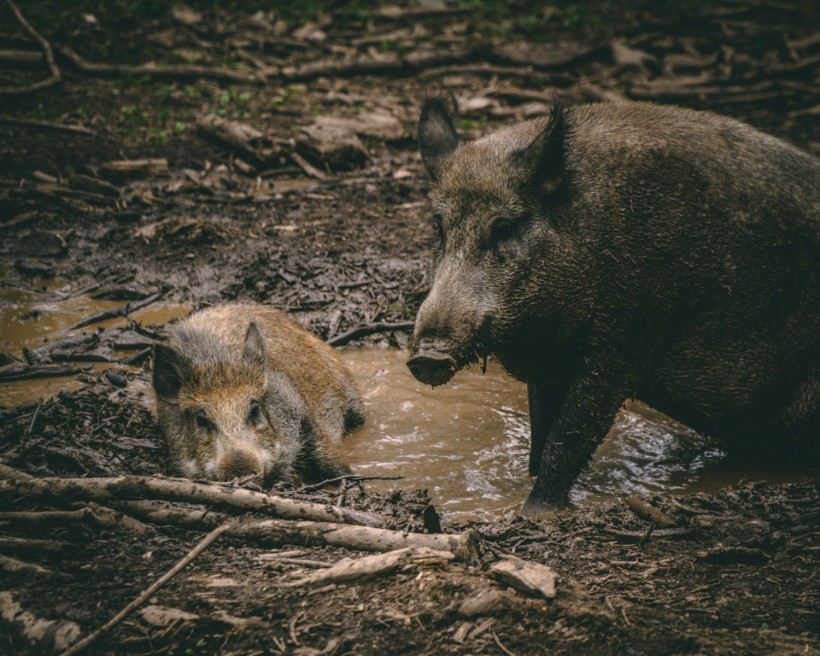Wild feral pigs dubbed as "super pigs" are set to cross from Canada to the United States border soon, with predictions that the hogs' southward movement spill into the northern tier of the US. Specifically, reports project the wild animals will end up in the states of Minnesota, Montana, and North Dakota. A potential shift of the apparent animal migration activity could also land the swine group in other parts of the country.
The super pigs could make their debut in the North US before the official start of the 2023 North American winter season, where winter storms, heavy snow, and cold temperatures are expected. Although the feral pig is not known to be a migratory animal, they tends to stay within the boundaries of their initially identified home. However, wildlife experts say wild pigs can also make significant movements as a response to consistent disturbances in their ecosystem or season-related activities.
Super Pigs Invasion

The super pigs invasion is a result of wild feral pigs coming from the Canadian provinces of Alberta, Manitoba, and Saskatchewan. Yet, this is not the first time that a wild feral pig invasion has taken place in the country. According to the US Department of Agriculture (USDA), approximately 6 million individual swine have already entered at least 35 states of the country.
The wild pig's arrival in the US is not only a matter of ecological threat but also a potential public threat. After all, experts warn that they are still wild animals that can exhibit violent behavior with little or without warning. In recent months, similar incidents have been reported in Poland, where a wild boar population is growing and invading Polish cities. Aside from the risk of wild pig attack, native animals or species could also be threatened by non-native wild pig species.
Wild feral pigs are descendants of escaped or released pigs. Regardless of their species, the feral swine are dangerous, destructive, and an invasive species. These large mammals are also referred to by other names like wild boar, Russian boar, Eurasian boar, razorback, and piney woods. In 2019, a fatal wild hog attack involved the death of a 59-year-old woman in Texas. It is the fifth recorded wild super pig attack recorded since 1825.
Also Read: Experts Fear Ecological Disaster as Wild Pigs Are Rapidly Spreading Across Western Canada
Americas Feral Swine History
The first members of super pigs were first brought to the US during the 1500s by early explorers and settlers as a source of food, according to the USDA. However, this repeated introduction paved the way to the uncontrollable entry of the invasive pig species, which have thrived and expanded over the past several centuries, even some have become domestic pigs.
Prior to 1539, there have been no swine species found across the North America continent, with only a pig-like animal called the peccary was found in the Americas, according to the Mississippi Department of Wildlife, Fisheries, and Parks (MDWFP).
Related Article: Wild Boar Population Increases in Warsaw, Other Polish Cities; Increasing Risk of African Swine Fever
© 2024 NatureWorldNews.com All rights reserved. Do not reproduce without permission.



![Climate Change is Reducing Dust Levels Worldwide as Arctic Temperature Warms [Study]](https://1471793142.rsc.cdn77.org/data/thumbs/full/70320/280/157/50/40/climate-change-is-reducing-dust-levels-worldwide-as-arctic-temperature-warms-study.jpg)

